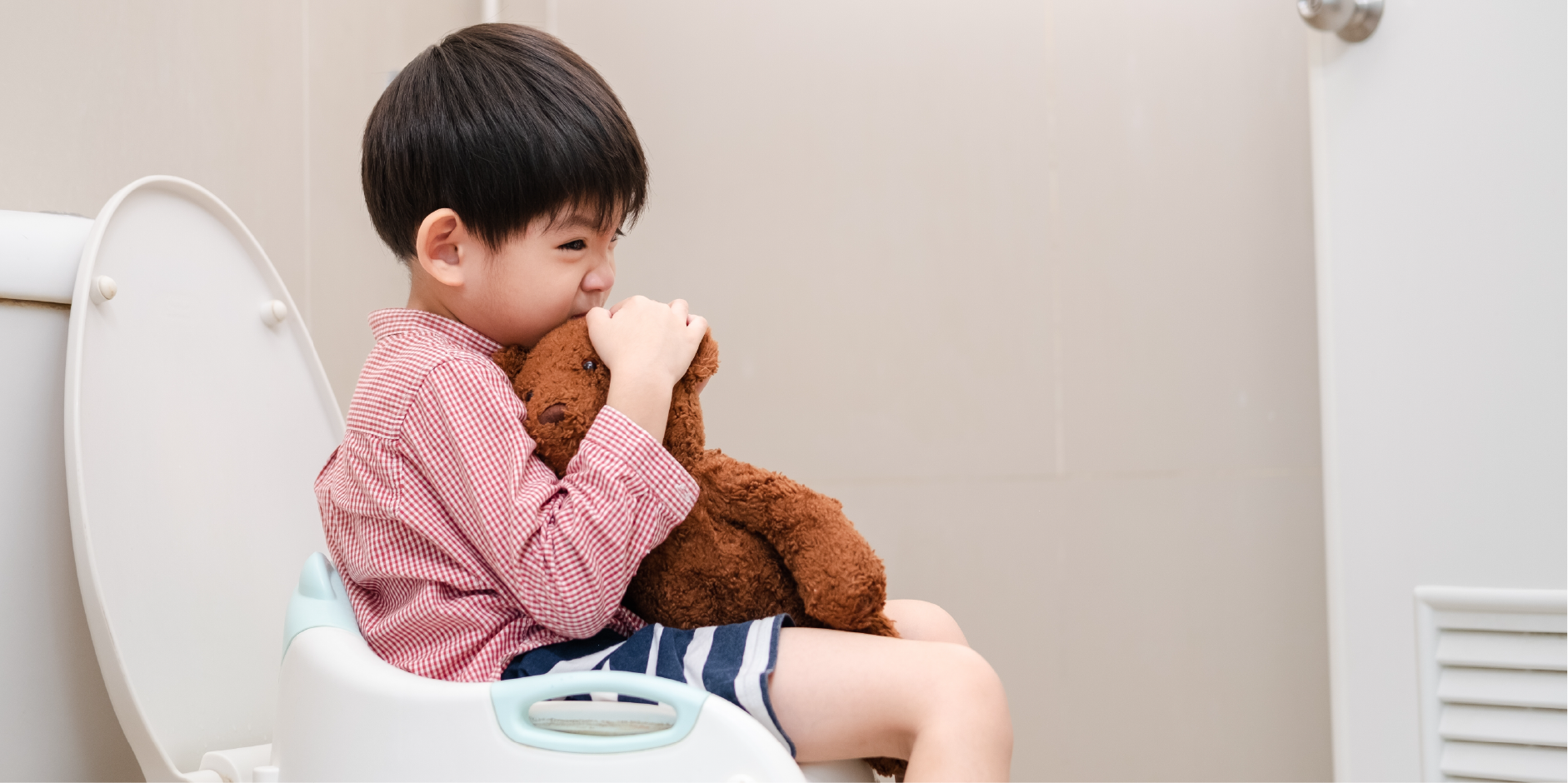Content on this page:
Content on this page:
Clinical Presentation
The
following are the signs and symptoms of constipation:
- Absence of bowel movement for several days (may be normal in breastfed infants)
- Encopresis (soiling of undergarments due to involuntary leakage of feces)
- Large, hard, and dry stools or frequent small pellets
- Irregular stool texture
- Foul smelling wind and stools
- Blood in stool
- Pain while defecating
- Excessive flatulence
- Withholding or straining to stop passage of stools
- Abdominal pain
- Distention or discomfort
- Poor appetite
- Crankiness or unhappy, irritable mood
- Lack of energy
- Body malaise
 Constipation in Children_Initial Assesment
Constipation in Children_Initial AssesmentHistory
The following are key components in history taking: In children <1
year old, stool patterns (<3 complete stools per week, hard large stool,
“rabbit droppings”), symptoms associated with defecation (distress while
defecating, bloody hard stool, straining), and previous history of constipation
or previous or current anal fissure; and in children >1 year of age, stool
patterns (<3 complete stools per week, overflow soiling, “rabbit droppings”,
large hard infrequent stools), symptoms associated with defecation (poor
appetite that improves with passage of large stool, waxing and waning of
abdominal pain with passage of stool, straining, anal pain), and previous
episode(s) of constipation, previous or current anal fissure, painful bowel
movements with bleeding associated with hard stools.
Medical history taking should also include previous treatment (eg diet,
medications, adherence), family history, medical history (eg time of passage of
meconium, condition at birth, growth), developmental history (eg school
performance), and psychosocial history (eg family and peer interactions, temperament).
Physical Examination
A complete physical examination should be performed, with focus on the
abdomen (eg distension, palpate the liver and spleen, fecal mass), anus (eg
position, presence of stool, erythema, skin tags, fissures), rectum (eg anal
wink, anal tone, fecal mass, presence and consistency of stool, explosive stool
on removal of the finger), back and spine (eg dimple, tuft of hair), and neurology
(eg tone, strength, cremasteric and deep tendon reflexes).
A digital rectal exam (DRE) is done to assess
the tone in the rectum and the presence of impaction. A DRE should be done only
by healthcare professionals capable of interpreting anatomical abnormalities or
diagnosing Hirschsprung disease. DRE is not to be performed in children >1
year of age with red flag signs and symptoms. It is advisable for
<1-year-old-patients diagnosed with idiopathic constipation unresponsive to
optimum treatment within 4 weeks. No confirmatory imaging tests are indicated
if fecal impaction is present on DRE. An abdominal X-ray may be needed if a
rectal exam cannot be done or is traumatic for the child.
Diagnosis or Diagnostic Criteria
Functional Constipation
Functional constipation is constipation that cannot be explained by any
anatomical, physiological, radiological, or histological abnormalities. It is
also known as idiopathic constipation, functional retention or fecal
withholding. It is the most common cause of constipation. It is commonly caused
by painful bowel movements with resultant voluntary withholding of feces by a
child who wants to avoid unpleasant defecation.
Functional constipation is considered present when the following are
detected in the history, such as passage of stool within 2 days of birth, hard
large-caliber stools, encopresis, painful defecation, bloody stools, decreased
appetite, abdominal pain with bowel movement, diet low in fluid and fiber, high
in milk products, avoids the toilet. In the PE there is, normal appearance of
the anus and the surrounding area, soft or mild distention of the abdomen,
stool is palpable in the lower left quadrant, normal anal placement and
sphincter tone, rectum distended and filled with stool, positive anal wink and
cremasteric reflex. It must be noted that manifestations of functional
constipation can overlap with those of irritable bowel syndrome, functional
diarrhea, and functional distention.
Rome IV diagnostic criteria for functional constipation in infants and
children up to 4 years of age:
- ≥2
of the following present for at least 1 month:
- Two or fewer defecations per week
- History of retentive posturing or excessive volitional stool retention
- History of painful or hard bowel movements
- Presence of a large fecal mass in the rectum
- History of large diameter stools that may obstruct the toilet
- For
children already potty-trained, additional criteria are as follows:
- Incontinence of ≥1 episode per week after learning toilet skills
- History of large-diameter stools causing toilet clogging
Rome
IV diagnostic criteria for functional constipation in children and adolescents ≥4 years of age:
- ≥2
of the following present at least once per week for at least 1 month
- Two or fewer defecations per week
- At least 1 episode of fecal incontinence per week
- History of retentive posturing or excessive volitional stool retention
- History of painful or hard bowel movements
- Presence of a large fecal mass in the rectum
- History of large diameter stools that may obstruct the toilet
- Above symptoms unrelated to another disease
